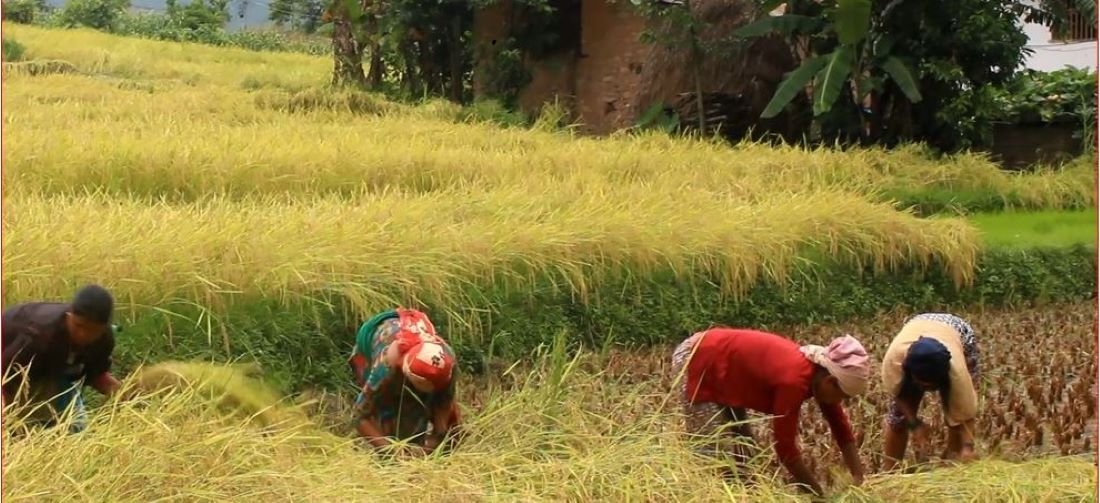
Kathmandu, Oct 2: The Department of Hydrology and Meteorology has urged farmers to postpone the schedule for rice harvesting and ensure the prompt storage already harvested rice as the duration of monsoon is getting prolonged this year.
Tentatively, the process for monsoon exit commences on October 2 and this year, it still remains active. Senior meteorologist Barun Poudel said the duration of monsoon is getting prolonged as it is likely to take around one week for its departure.
According to the Meteorological Forecasting Division under the Department, at present the axis of the monsoon trough remains at an average location and Nepal experiences impacts of the low pressure system based in surroundings of the Bihar and West Bengal states in India.
Cloudy sky is expected for the next few days and rainfall is likely to take place at several places and in this prediction, farmers need to be especially careful for protecting their crops. This is rice harvesting season, if there is a plan to cut rice plants, it is advised to postpone by a week and if already collected, it requires prompt storage. He urged famers to wait until monsoon ends to harvest crops.
Tonight, partly to generally cloudy is expected throughout the country. Light to moderate rain with thunder and lightning is likely to occur at some places of Koshi Province, Madesh Province, Bagmati Province and Lumbini Province and at one or two places of rest of the provinces.
Two years ago, the Department had revised the tentative timeline for an entry and exit of monsoon setting it at June 13 to October 2. Prior to this, this timeline was fixed at June 10- September 23. The tentative period for the monsoon is revised being based on the analysis of each 10 years.
In the recent years, the exit of monsoon is getting delayed. This year, monsoon began on June 14 and it was spread nationwide after nine days of the arrival. It firstly arrived in eastern part of Koshi, Madhesh and Gandaki Provinces and almost all part of the Bagmati Provinces. When it was in initial phase, it caused significant losses of lives in eastern Nepal.
Comments